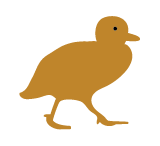The colourful Chinese theatrical tradition goes back a millenium to the Mongol Dynasty (12th-13th century AD). It has produced many literary masterpieces (The Western Chamber, The Peony Pavilion), and an extraordinary stylised performance tradition that has survived to the present day (Peking Opera, Kunqu). Kunqu Theatre has recently been inscribed in the UN list of world intangible heritage sites. The basic aesthetic of Chinese Theatre is informed by the same basic ideas that underly Chinese poetry, art, calligraphy and philosophy.
This is a middle level non-language course designed to introduce students across the university to the literary and aesthetic foundations of traditional Chinese lyric drama/opera. The course serves the following objectives.
First, it builds on the existing strands in our programme, offering Chinese literature for non-language students (we already have Fiction, and Poetry).
Second, it provides students with an insight into the working world of the Chinese opera performer, delivering a classical repertoire in a modern context.
Third, it provides an introduction to the fundamentals of traditional Chinese aesthetics. (It is envisaged eventually that we may have further courses in Chinese Art, Chinese Calligraphy, and possibly Chinese Garden and Landscape Design).
Proposed course structure is as follows:
First 4 weeks: Introduction to the classic literature and practice of Chinese drama, from the Yuan, Ming and Qing periods.
Middle 4 weeks: Aesthetics of Chinese theatrical performance art, including movement, singing and make-up.
Last 5 weeks: Readings in the literature, and further viewings of performances.
Learning Outcomes
Upon successful completion, students will have the knowledge and skills to:
On completing this course students will have acquired a knowledge of the basic aesthetics and performance skills of traditional Chinese theatre, and of the ways in which that theatre relates to Chinese poetry and fiction on the one hand, and the symbolism of Chinese art, calligraphy and philosophy on the other.The course will be taught by Prof Minford, who translated the classic fictions Strange Tales from a Chinese Studio and The Story of the Stone (vols 4 and 5), and is an acknowledged authority on traditional Chinese literature, and by Ms Tang Yuen-ha, one of China's leading exponents of the art of kunqu theatre.
Other Information
Delivery Mode
On Campus
Indicative Assessment
Proposed Assessment: Tutorial attendance 10%; tutorial presentation 10%; end-of-term test 35%; essay 45%
The ANU uses Turnitin to enhance student citation and referencing techniques, and to assess assignment submissions as a component of the University's approach to managing Academic Integrity. While the use of Turnitin is not mandatory, the ANU highly recommends Turnitin is used by both teaching staff and students. For additional information regarding Turnitin please visit the ANU Online website.
Preliminary Reading
Course readings consist of literary and theoretical writings in translation on the history, literature and performing art of Chinese theatre, beginning from the Yuan dynasty (zaju and zhugongdiao), through the Ming and Qing (chuanqi, kunqu and jingju).
Fees
Tuition fees are for the academic year indicated at the top of the page.
If you are a domestic graduate coursework or international student you will be required to pay tuition fees. Tuition fees are indexed annually. Further information for domestic and international students about tuition and other fees can be found at Fees.
- Student Contribution Band:
- 1
- Unit value:
- 6 units
If you are an undergraduate student and have been offered a Commonwealth supported place, your fees are set by the Australian Government for each course. At ANU 1 EFTSL is 48 units (normally 8 x 6-unit courses). You can find your student contribution amount for each course at Fees. Where there is a unit range displayed for this course, not all unit options below may be available.
| Units | EFTSL |
|---|---|
| 6.00 | 0.12500 |
Course fees
- Domestic fee paying students
| Year | Fee |
|---|---|
| 2015 | $2958 |
- International fee paying students
| Year | Fee |
|---|---|
| 2015 | $4350 |
Offerings, Dates and Class Summary Links
ANU utilises MyTimetable to enable students to view the timetable for their enrolled courses, browse, then self-allocate to small teaching activities / tutorials so they can better plan their time. Find out more on the Timetable webpage.


